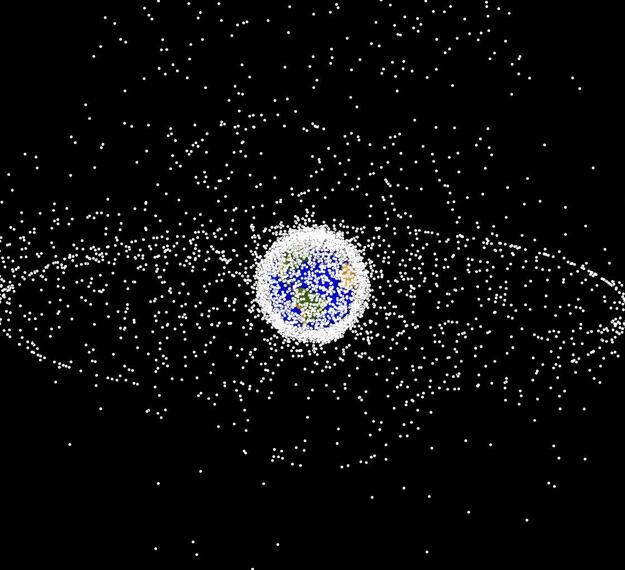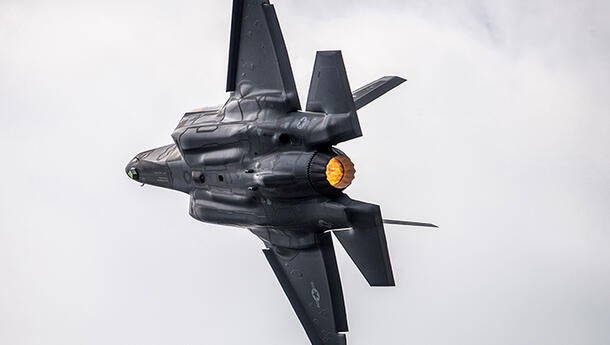Overview
Advancing Combat-Ready Space Domain Awareness (SDA)
Protecting our nation’s space assets and access has never been more challenging – nor more vital to national security. Advanced radar technologies that can detect, track and maintain custody of objects in deep-space orbit will be essential for tomorrow’s successful multidomain operations.
At L3Harris, we are combining our strong SDA mission understanding and our experience in complex radar system integration, design and global deployment with significant research and development investment. Together with our commitment to quality and continuous improvement, these enable a successful, cost-effective deep-space radar capability for the U.S. Air Force and Space Force.
Accelerating Schedule, Reducing Risk
Moving from passive space situational awareness to comprehensive, operationally focused SDA requires pushing the boundaries of science and technology – and that introduces risk, particularly when there is an equally important “need for speed” in program execution and operationalization. L3Harris’ meets these challenges with three discriminating strengths.
Mission Understanding
Over the past two decades, we have developed and fielded radar capabilities worldwide and provided ongoing, comprehensive support for many of the radars in the SSN. Today, under the Maintenance of Space Situational Awareness Integrated Capabilities (MOSSAIC) contract, we also provide critical support to the key SDA C2 centers. This ensures complete mission coverage to integrate critical radar capabilities in the SDA suite of sensors. Our support has encompassed identifying and resolving deficiencies, engineering new operational capabilities, reducing life-cycle management costs and paving the way for future technology insertion. We have integrated cyber security into our development approach and fielded capabilities without impacting operational availability. And we have transformed federally funded research and development center prototype systems into operationally accepted SSN assets.
Radar Design Expertise
Reconfigurable dish arrays will be a critical element of the future deep-space radar architecture. Since 1969, L3Harris has supplied large-aperture, full-motion antennas in support of U.S. government programs and has installed antennas on every continent in the world. Our mission- critical systems operate reliably from the Arctic to the tropics for commercial and military applications.
Our core competencies include precision pointing and tracking, design for high duty cycle and extreme mechanical and environmental conditions, and global deployment. Our turnkey, secure solutions for U.S. defense and national security customers include site development and construction for S- to Ka-band antennas up to 20 meters in diameter.
Proven Process and Tools
The foundation of our systems integration success is a rigorous, repeatable and proven systems engineering process and an analytics-based approach to system and enterprise design and enhancement. Our agile methodology emphasizes model-based systems engineering and continuous integration and delivery via best practices in development, security and operations – or DevSecOps – to increase productivity, ensure stakeholder buy-in and move projects forward quickly and successfully.
We fast-track assessment design alternative impacts through modeling and simulation and our comprehensive set of system and enterprise performance analysis tools. These are specific to both phased array and dish array systems and include an SDA enterprise simulation capability that can be used to assess the enterprise mission effectiveness impacts of any proposed sensor modifications.
The result is a minimum viable product delivered quickly, without disruption to the warfighter, with development iterations for continuous improvement.
Investing for a Cost-Effective Solution
With the goal of expediting a cost-effective deep-space radar solution, the U.S. Air Force and Space Force contracted with John Hopkins University Applied Physics Laboratory (APL) to develop a Government Reference Architecture (GRA). L3Harris’ radar and C2 programs have successfully completed projects dealing with every aspect of the GRA. Of particular interest are the demonstrations of continuous self-calibration of a coherently combined, widely spaced array. The government’s top technical risk, calibration perishability, is fully retired by this demonstration.
Because there are some residual risks not addressed by the current GRA prototype, we are augmenting this approach with our own internal research and development (IRAD) investment. These IRAD efforts have demonstrated an SDA enterprise simulation capability that can be used to assess the enterprise mission effectiveness impacts of any proposed sensor modifications. Other efforts address mission processing and management not included in the APL prototype.
Committed to Quality, Continuous Imrovement
Delivering a successful deep-space radar solution quickly and cost effectively requires more than strong business and program execution capabilities; it demands a demonstrated commitment to quality and continuous improvement.
As a baseline, all L3Harris programs establish and maintain an ISO 9001- compliant quality management system. Additionally, we employ a corporatewide, continual improvement business operating system known as e3 (excellence, everywhere, everyday), which focuses on employee development, establishment of efficient processes and reduction of process variance. L3Harris’ e3 program leverages Lean Six Sigma tools and is supported by an established cadre of qualified black belt and green belt subject matter experts.
This quality and improvement culture, when joined with our understanding, experience and investments, lays the foundation to fast-track development and operationalization of deep-space radar and enable combat-ready SDA.


